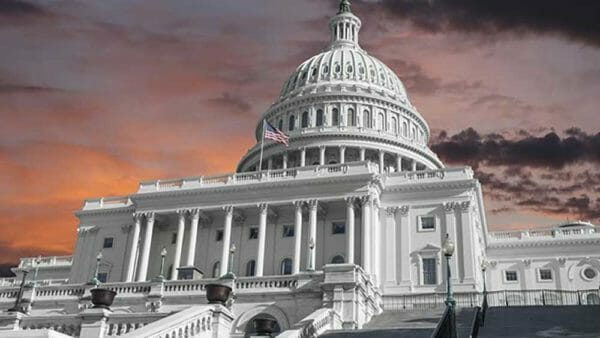
United States – -(AmmoLand.com)- With the 117th Congress in session, there will be a flurry of legislation introduced. But what exactly does an introduced measure do? What do those combinations of letters and numbers in front of a bill mean?
For starters, any Senator or Representative can introduce a piece of legislation. For the most part, they will be numbered in the order received – a bill with a lower number was introduced earlier in the Congress than one with a higher number. But different items of legislation do different things. Here’s a quick rundown of the four types of legislation that you will most often see discussed:
Bills
These are the potential laws that are introduced. In the House, bills are given numbers in the HR series, while Senate bills are given numbers in the S series. To become a law, they must pass the House and Senate, then usually go to a conference committee, and be signed by the President or passed with a two-thirds majority to override a veto.
Resolutions
These are measures passed by one of the houses of Congress, often to make a statement. They have the H. Res. prefixes in the House of Representatives and S. Res. in the Senate. One item to note: In the House of Representatives, rules to govern debate on legislation are House Resolutions and get the H. Res. Prefix.
Concurrent Resolutions
These are measures based by both houses of Congress, often for the purposes of making a statement. In this way, they are very similar to the basic resolutions mentioned above. The president has no involvement in these, and they carry no force of law. The most notable concurrent resolutions are the ones that launch the federal budget each fiscal year. Ones that originate in the House of Representatives get the H. Con. Res. prefix, while those starting in the Senate have the S. Con. Res prefix.
Joint Resolutions
A joint resolution is like a bill in some ways. It needs passage by both the House and Senate, and approval by the President (or an overridden veto) to become law. Unlike bills, they don’t change the United States Code. Instead, they are the vehicle for constitutional amendments, continuing resolutions, and constitutional amendments. Those introduced in the House get the H. J. Res. prefix, and in the Senate, the S. J. Res. prefix is used.
There will be a lot of legislation – in the 116th Congress, there were over 14,000 bills introduced in the House of Representatives and the Senate. To ensure that legislation that doesn’t respect our freedoms is defeated, Second Amendment supporters should support the National Rifle Association’s Institute for Legislative Action, and also back their Political Victory Fund in order to be ready for not just the legislative fights ahead, but elections in 2022 and 2024.
About Harold Hutchison
Writer Harold Hutchison has more than a dozen years of experience covering military affairs, international events, U.S. politics and Second Amendment issues. Harold was consulting senior editor at Soldier of Fortune magazine and is the author of the novel Strike Group Reagan. He has also written for the Daily Caller, National Review, Patriot Post, Strategypage.com, and other national websites.

The post Congressional Legislation 101 – Types Of Measures appeared first on AmmoLand.com.
from https://ift.tt/3hVsdph
via IFTTT

No comments:
Post a Comment